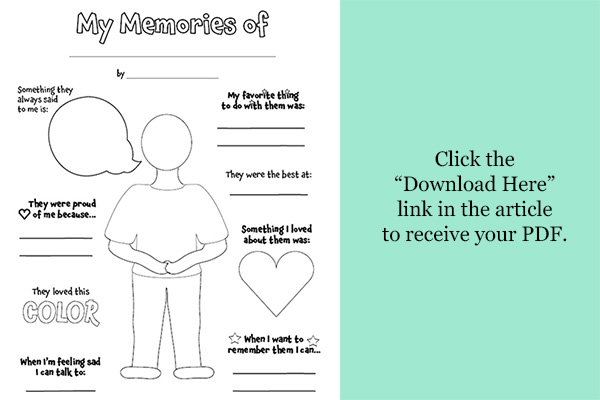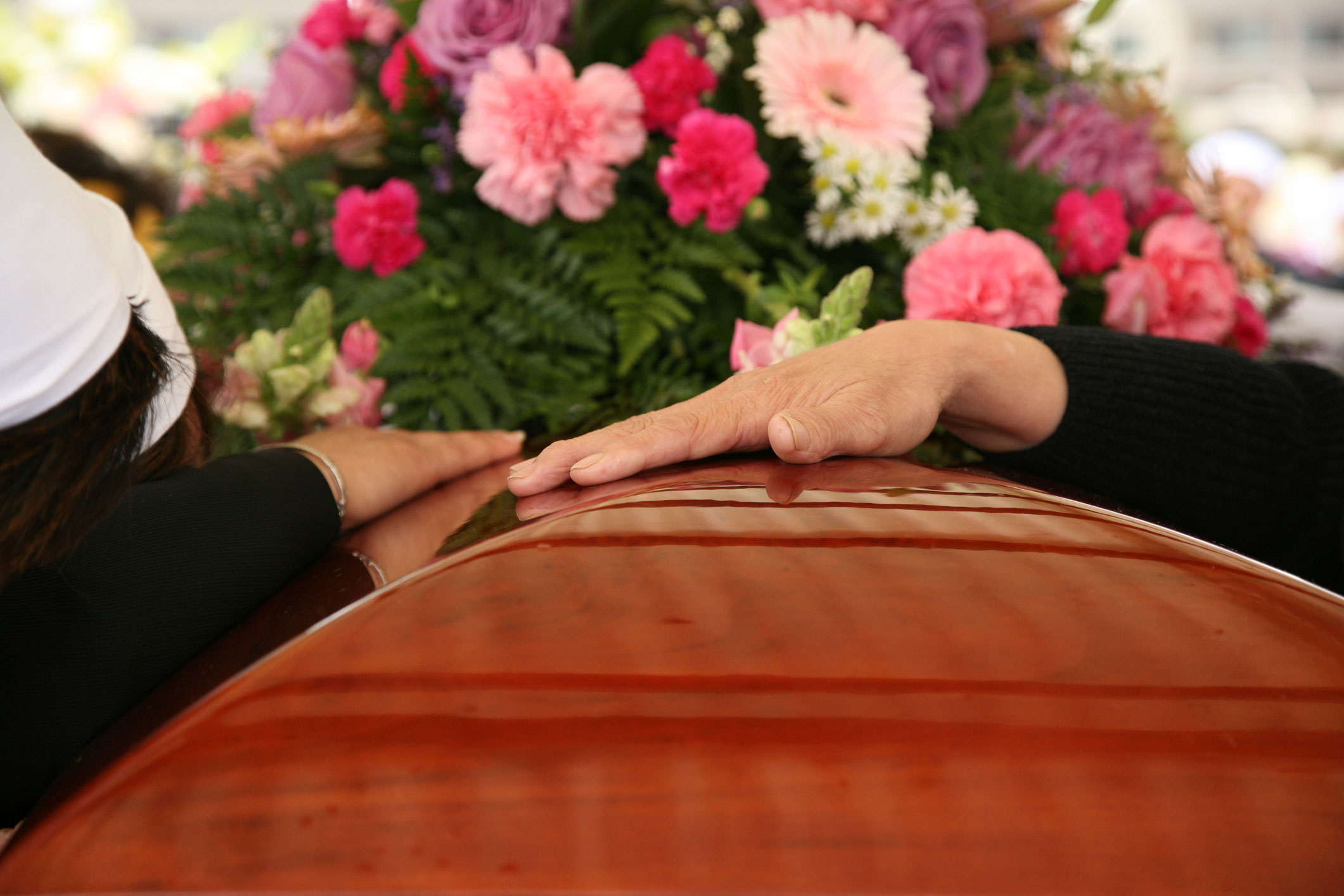Recent Articles
Welcome to our blog! Here we will share information with you on topics ranging from cremation and funeral planning to grief support and positive living. You can also sign up for our email newsletter to receive ongoing updates.

Attending a funeral or memorial service can stir up many emotions, and for some, one of the first questions that comes to mind is: What should I wear? While traditions around funeral attire have evolved, dressing appropriately remains a way to show respect—for the person who has passed and for their loved ones. Whether the service is formal, casual, religious, or a celebration of life, here are a few thoughtful guidelines to help you choose what to wear. 1. Stick to Neutral, Conservative Colors Black is the traditional color of mourning in many cultures, but it's not your only option. Other respectful colors include navy, gray, deep green, brown, and muted tones. Avoid bright colors, loud patterns, or anything that draws unnecessary attention unless the family has requested otherwise. Tip: Some services may invite guests to wear the deceased’s favorite color or dress casually—check the obituary or invitation for guidance. 2. Dress Modestly and Neatly Funeral services are somber occasions, so choose clothing that is clean, pressed, and conservative: For women, options include a modest dress, blouse with slacks, or a skirt paired with a cardigan or blazer. For men, a dress shirt with slacks, a suit, or a sport coat with a tie is appropriate. 3. Footwear Matters, Too Choose closed-toe shoes that are comfortable, especially if you'll be standing or walking at a graveside service. Simple dress shoes, loafers, or flats work well. Avoid athletic sneakers or flip-flops unless the service is explicitly casual or outdoors. 4. Consider the Location and Weather The setting of the service can influence your outfit: For outdoor or graveside services, wear weather-appropriate clothing and shoes that can handle grass or gravel. Bring an umbrella or coat if needed. Dark outerwear is always a safe choice. In a place of worship, modest attire is often expected regardless of the season. 5. Keep Accessories Simple This is not the time for flashy jewelry or bold accessories. Choose understated items that won’t distract from the purpose of the gathering. 6. What About Children? Children should also be dressed neatly and conservatively. Simple outfits in neutral colors are best. If unsure, dress them as if attending a formal family event or church service. 7. When in Doubt, Dress Up a Bit It’s always better to be slightly overdressed than too casual at a funeral. If you’re unsure about the dress code, err on the side of formality. A respectful appearance helps convey sympathy and support. What you wear to a funeral doesn’t need to be fancy or expensive—but it should reflect care, humility, and consideration. Remember: your presence is what matters most

Planning a funeral or cremation—whether for a loved one or preplanning for yourself—can feel overwhelming. There are many decisions to make, all while navigating the emotions that come with loss. But with a little preparation and guidance, the process can be meaningful, healing, and manageable. Whether you're planning ahead or handling arrangements after a loss, this guide walks you through the key steps of planning a funeral or cremation service. 1. Decide Between Burial and Cremation One of the first decisions to make is whether the individual will be buried or cremated. This choice often depends on personal, cultural, or religious preferences. Burial typically involves a casket, a graveside service, and a cemetery plot. Cremation may still include a funeral or memorial service and allows for more flexible options such as scattering, keeping an urn, or burying cremated remains. Some families choose direct cremation (without a service) or direct burial and hold a memorial at a later time. 2. Decide on the Type of Service There are many ways to honor a life, including: Traditional funeral service (usually with the body present) Memorial service (typically after cremation or burial) Celebration of life (a more personalized, informal event) Services can take place at the funeral home, a place of worship or outdoors. Choose what best reflects the person’s life and what brings comfort to those attending. 3. Select the Details You’ll want to personalize the service with details such as: Obituary and newspaper or online notices Casket or urn selection Music, readings, or spiritual elements Photos, videos, or displays of personal items Flowers or charitable donation options Who will speak, perform, or participate Many families also choose to include military honors, religious traditions, or cultural customs. 4. Consider Final Resting Place Options For burials: Choose a cemetery and purchase a plot if one isn’t already owned Decide on a headstone or grave marker For cremation: Decide whether ashes will be kept, scattered, buried, or placed in a niche Some families divide ashes among keepsake urns or jewelry 5. Handle Legal and Practical Matters Don’t forget the necessary paperwork: Obtain a death certificate (you may need multiple copies) Notify Social Security and financial institutions Handle wills, trusts, and estate matters If applicable, coordinate with veterans’ services or insurance providers Funeral directors can help guide you through most of this, but having documents organized in advance can ease the burden. 6. Consider Preplanning Preplanning your own arrangements relieves your loved ones of decision-making during an emotional time. You can: Specify burial or cremation preferences Choose the type of service and location Prepay or set aside funds Record personal touches you’d like included Preplanning ensures your wishes are followed—and it brings peace of mind to everyone involved. While planning a funeral or cremation is never easy, it is an opportunity to reflect, remember, and celebrate a life. Whether you’re planning for the future or coping with a loss today, take each step at your own pace, and don’t hesitate to reach out to professionals or trusted loved ones for support.

Have you ever been caught up in the moment and paid more for something than you planned? We’ve all been there. Maybe it was the new car after you got that promotion, the newly-released cell phone, or the upgraded cable/internet package that they talked you into when you called to cancel your service. When a death occurs, there is often so much to think about and so many decisions to be made, that it can be hard to be sure you are making the right choices. Sometimes this can lead to spending more than you normally would. Planning ahead lets you to calmly and carefully consider all of your choices, selecting only the products and services that you desire. Our experienced staff of preplanning professionals can explain all of your options, so you can make the choices that are right for you and your family. During the preplanning process, you will design the funeral service that you want, and arrange all the details, such as location, minister or celebrant, songs to be played, people to be recognized in your obituary, etc. This will take the burden of decision-making off of your loved ones, and give them peace of mind knowing that the service was exactly what you wanted. We will provide you with a clear, itemized list of services and merchandise, which will serve as a road map for your survivors to follow. You can set aside funds to pay for the arrangements in advance through the purchase of a funeral insurance policy. Life insurance policy funds can also be allocated to pay for funeral expenses, at the discretion of your beneficiary. Planning ahead allows you to fully consider all your choices, and avoid emotional overspending, so if you'd like to learn more, please give us a call.

“We travel, initially, to lose ourselves; and we travel, next to find ourselves.” – Pico Iyer Traveling can provide an insightful perspective into your life, but when you're grieving, that perspective often widens into something much more. Grief can be isolating and lonely. Traveling can serve as a reminder to yourself that there is a whole world out there outside of the walls of your home and familiar places that may remind you of your loss. A vacation may be the last thing on your mind. However, it can aid in your grieving journey by not forgetting that you are grieving but making it easier to remember good times with your loved one. We’ve come up with four ideal vacations to consider to enrich your heart and soul, melt away stress and have a deeply rejuvenating and meaningful adventure. The Cruise Vacation Being away at sea can be healing for grieving on both an emotional and health level. Nothing says adventure like booking a voyage and being whisked away on a ship to forget about real life for a week or so. On a cruise, you’ll be waited on hand and foot and have access to food around the clock, on board entertainment and an environment of elegance and fun. Plenty of sunshine gives your body a Vitamin D dose, which boosts the immune system and offers natural anti-depressants from positive endorphins. Fresh ocean water also produces positive mental function and respiratory health. As a big plus, there are cruise packages for every budget. You can book anything from a quick 3-day cruise to Mexico or the Caribbean, to a 14-day Alaskan or Mediterranean voyage. The Therapeutic Vacation While there is a time for adventure, for some the grieving journey calls for complete relaxation. In this case, an all-inclusive resort package in a tropical location may work wonders. Perhaps a more budget-friendly option is a getaway to a cabin or bed and breakfast? Many people choose to book stays specializing in therapeutic relaxation and spa treatments. All of these are awesome options if you want to lower the cortisol levels in your body and enjoy the soothing relaxation of treating yourself. In the United States, locations like Colorado Springs, Colorado, and Asheville, North Carolina can offer plenty of rest and relaxation. If you’re thinking of adding stamps to your passport, the Icelandic or Irish countryside can rejuvenate you. The Physical Activity Vacation Many people choose to grieve by engulfing themselves into rigorous physical activity. This is a great way to de-stress while improving your health and adding years to your life. Some people might choose vacations with world-class fitness centers or challenges, while others prefer to embark on natural physical challenges including climbs, hikes, and trails. Climbing Japan’s Mt. Fuji not only to physically exert yourself but also to boost your emotional health through confronting and conquering a challenge. You’ll have stories for life when you decide to explore natural rainforests or go kayaking through British Columbia or New Zealand. The Sight-Seeing Vacation Taking in breathtaking monuments, structures or natural wonders do a lot to expand your horizons and touch your emotions. These vacations work to put life and the world into perspective, which is essential in any grief journey. There are countless sights and landmarks to see. A trip to check out the Grand Canyon, Eiffel Tower, New York Skyscrapers, Swiss Alps, Great Wall of China, Pyramids of Africa and the list goes on. You can’t go wrong with any of these vacations. Comb through them to see which touch your heart and fill needs that will help your mental, physical and spiritual health.
Popular Articles

What does it mean to leave a legacy? When people we love pass away, they leave us with memories, but they often leave us with tangible gifts, too. Those may come in the form of family photo albums, letters, or journals. If we’re lucky, they leave behind important traditions that stick with our families for generations.

Losing a loved one is hard on all of us, and can be especially difficult for children, who may not really understand what is going on or what death really means.Sometimes, an activity that children already enjoy can be a good way to connect with them about a difficult topic. To help, we’ve created a printable activity sheet that you can download here from our website to help stir positive memories and conversations about the loved one who is now gone. The sheet includes simple questions that your child can answer about the person who has died, as well as a figure and shapes to color. You can color a worksheet yourself and have a conversation with your child during the process.You may find that your child wants to revisit this activity several times with you as they process more memories and aspects of their loss. Saving the activity sheets in a folder, notebook or photo album can allow them to revisit the memories when they are older.Please know that some children may need additional, professional assistance in processing through a difficult loss. Indications that this might be the case include sadness that is always present and does not subside over time, continual feelings of hopelessness, pulling away from family and friends, an ongoing fixation on the loss, and the inability to accept the loss and embark upon a normal life. If your child experiences these symptoms of depression and/or complicated grief, experts highly recommend seeking professional help for your child immediately.

There are many decisions families need to make in planning their loved one’s final goodbye. We believe that each funeral service is unique, just as every person's life is unique. We are dedicated to making your loved one’s funeral service as special as they were. Here are some ideas to help make your loved one's funeral a wonderful tribute to their life.

